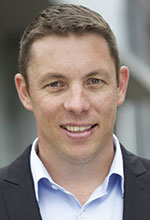
Last month we looked at how network-based technologies are driving trends and making hospital management smarter. This month we address the role of surveillance technology in improving patient care.
“In addition to addressing security issues, the hotel industry already uses cameras to improve the quality of customer service. Likewise, healthcare facilities are also gradually adopting this concept,” says Clifton Greeff, national surveillance business manager at Duxbury Networking, distributor of Axis surveillance technology.
Hospitals can address a number of understaffing and financial aid challenges by relying more on remote patient monitoring from central monitoring stations to ensure quality patient care and more efficient resource allocation.
“From a management point of view, it makes perfect sense. That’s because, for example, beds in Intensive Care Units (ICUs) need to stay within the visual field of nursing staff. In fact, the very concept of an ICU implies that the beds are visually monitored. But the physical layout of the building does not always allow for this. In some cases, the ICU has expanded and evolved so that some beds end up being placed away from the nurse’s station,” says Greeff.
In some cases, cameras are used to optimise patient care processes. In the field of diagnostic medicine, for example, certain clinical procedures are performed under anaesthesia – a multi-step process during which patients must be monitored from the onset of sedation, through the procedure itself, and afterwards during recovery. This process is like a production line – while one patient recovers, another is undergoing their procedure, and a third is being prepped. If the clinic does not have sufficient staff to physically monitor all these processes, patient monitoring can be compromised. However, by simply placing a camera in the recovery room, medical personnel can simultaneously prep new patients and remotely monitor recovering patients from another room.

The real impact of accidents involving patient falls
Fall injuries are among the 20 most expensive medical conditions, with costs including fees for hospital and nursing home care, doctors and other professional services, rehabilitation, community-based services, use of medical equipment, prescription drugs, and insurance processing.
‘Risk for falls’ is a common nursing diagnosis, related to a number of factors such as age, use of anaesthetics and level of consciousness. In fact, patients are extremely vulnerable to falls when they are recovering from sedation as they instinctively try to remove intravenous devices and get out of bed.
There are a number of measures hospitals and nursing homes can adopt to minimise the risk of falling. Nevertheless, when accidents do happen, quick response is critical, especially for patients taking medications that interfere with their motor skills and attention.
The first few minutes are critical: falling can break bones, fracture a wrist, arm or pelvis, as well as cause head injuries. In fact, falls are the most common cause of traumatic brain injuries. And one in five falls causes some kind of serious damage.
In addition, falls that occur on hospital premises can result in hospital lawsuits from both patients and healthcare professionals. The claims are based on the understanding that as a service provider, hospitals are expected to provide security to those under their custody. If it can be established that a lack of security has resulted in injury, it could lead to a conviction in court. And in addition to costly litigation, health institutions may also suffer from damaged reputations.
Early fall detection is key to ensuring the best patient outcome. Cameras with embedded video analytics provide early detection, which greatly reduces response time. The video analytic SlipFall from TechnoAware (an Axis partner), was created specifically to detect and signal when a person falls and remains on the floor for a pre-defined period of time.
This is especially useful when the person falls in a secluded room. The alert message can be sent automatically to a control room, the central monitoring station, or to the care teams’ mobile phone, together with the video showing the situation in real-time.
For cameras facing the bed, Axis offers a video analytic called Cross-Line Detection that generates automatic alerts as soon as someone crosses a digital line (for example, the boundaries of a bed). Therefore, if someone is leaning out of the bed, the embedded camera intelligence will detect it and send an alert with the corresponding video image to the nurses’ station.
Next month we look at how security technology is improving hospital management.
| Tel: | +27 11 351 9800 |
| Email: | [email protected] |
| www: | www.duxbury.co.za |
| Articles: | More information and articles about Duxbury Networking |

© Technews Publishing (Pty) Ltd. | All Rights Reserved.